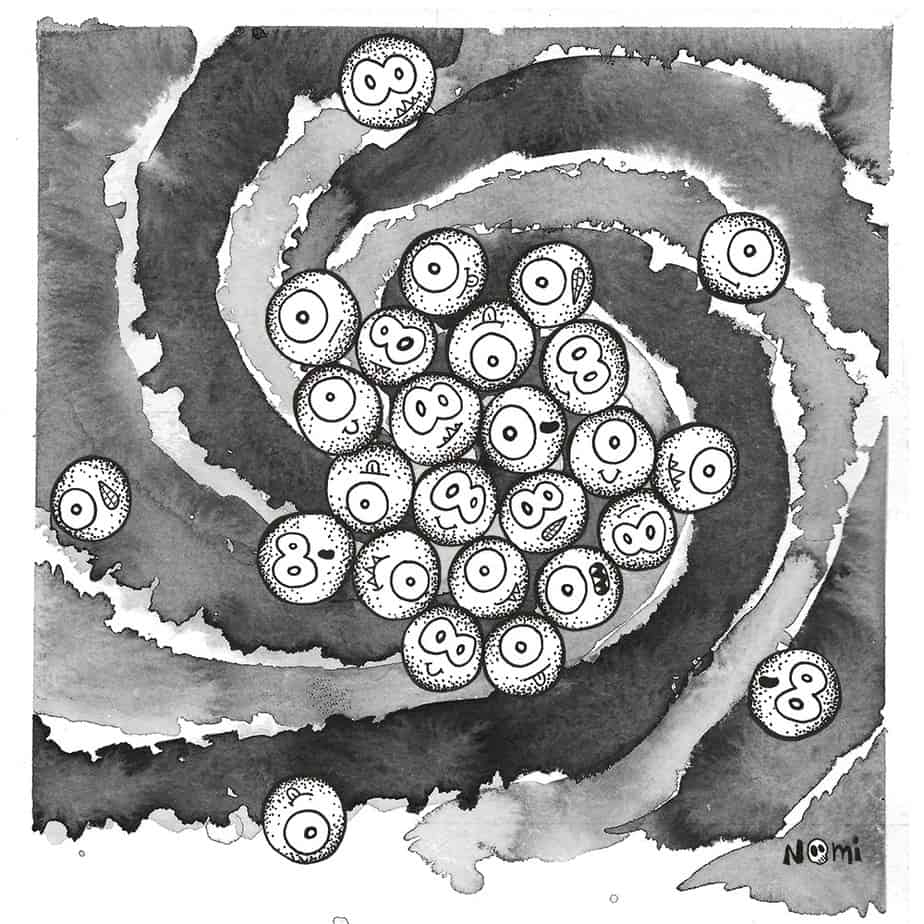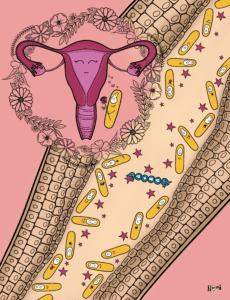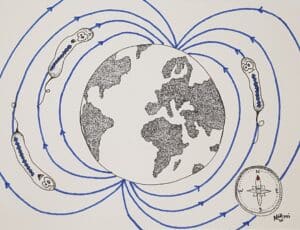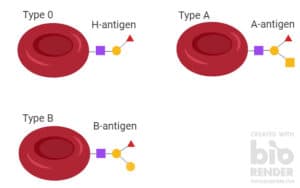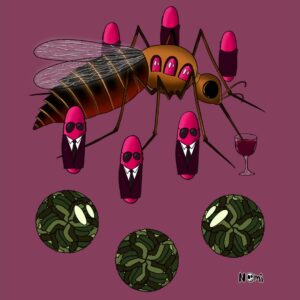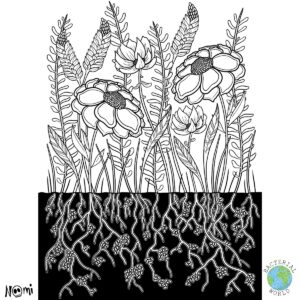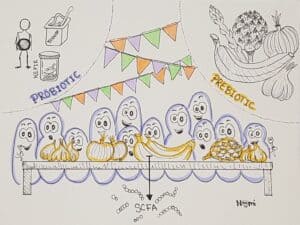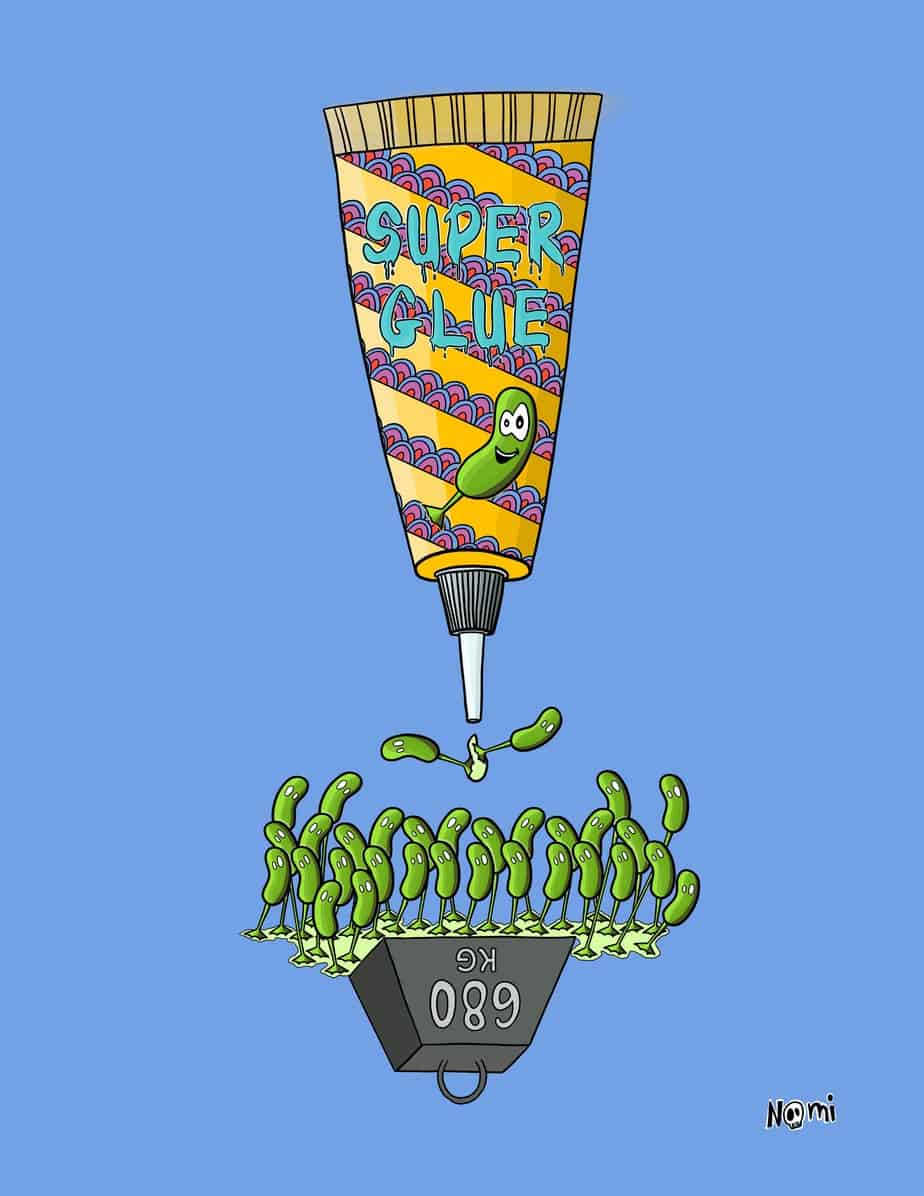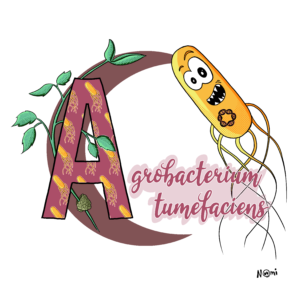Every living organism needs to eat. Humans, animals and also bacteria.
And when it comes to the size of an organism, one thing is quite clear: The bigger, the more food they need.
This is also true for bacteria. Depending on the shape of a bacterium, bacterial cells are differently big or small. And the bigger a bacterium is, the more energy they need.
So, in a location where there is not much food, this might be a problem.
Not for superhero bacterium Thiovulum majus. This one is a huge bacterium with an incredibly amazing mechanism to find and get food for itself and its brothers and sisters.
Read on to find out what this bacterium does to not run out of food.
Large bacteria run out of food easily
Thiovulum majus is one of the bigger bacteria with about 10 – 15 μm cell length. Average-sized bacteria are usually around 1 μm in length and the smallest nanobacteria even only 0.2 μm.
This makes Thiovulum majus a giant under the bacteria. It is about 10 – 15 times bigger than other bacteria. And this means it also needs a lot more energy and nutrients.

Thiovulum majus also has an interesting lifestyle. It lives at the bottom of salt marshes, close to water sediments. Here, the water contains a lot of sulfur, which Thiovulum majus uses to gain energy.
However, Thiovulum majus also needs oxygen to live. Hence, within water, it needs to be in the perfect spot with the right oxygen and sulfur concentrations. Sounds easy, but is pretty complicated if you’re a bacterium drifting in water.
First, to find the optimal spot in water, Thiovulum majus uses chemotaxis to follow the right oxygen concentration. As soon as they are satisfied with a location, they need to make sure to stay in this position. And Thiovulum majus found an amazing mechanism to achieve that.
A floating veil keeps bacteria in place
Interestingly, Thiovulum majus produces a so-called tether or stalk. This is a strong but flexible string made of mucus. It is pretty sticky and works like the superglue of Caulobacter crescentus.
When Thiovulum majus swims in water, it carries this stalk at its end. Here, it can grow up to ten times as long as the bacterial cell itself. And the stalk can stick to stalks from other bacteria or particles in the water.
When many stalks stick to each other and to particles, they form a net-like layer in the water. This layer, or a white veil, floats above the sediment in the water and can become several centimetres in size.
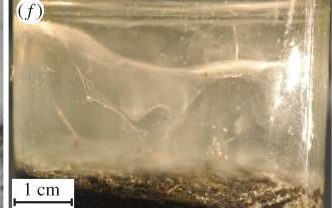
Now, the bacteria are attached to this veil since their stalks are stuck within this mesh of stalks. Scientists found that on a veil with the surface area of your fingernail, around 100’000 Thiovulum majus bacteria are attached.
Every once in a while one such stalk breaks and thus releases the bacterium. However, Thiovulum majus uses its chemotaxis to swim in a U-shaped pattern which brings it back to the veil. Growing a new stalk, the bacterium attaches to the veil again to make sure it stays in the right location.
Hence, using chemotaxis and attaching to the veil keeps Thiovulum majus in a more or less fixed position in the water. And this location has the optimal concentration of both oxygen and sulfur.
High-speed rotating bacteria bring nutrients to the population
Now imagine, lots of Thiovulum majus bacteria live at this location of optimal oxygen concentration. At some point, the bacteria have used the available oxygen in that surrounding.
How to bring in new oxygen?
Looking at the Thiovulum majus bacteria, you can see that they have many flagella on their cell surfaces. And by rotating these flagella, the bacteria start to rotate as well. And by rotating the whole bacterial cells, the bacteria induce a water flow. This flow draws water from above towards the bacterial cells and the veil. And this freshwater brings a lot of oxygen to the bacterial population.
This rotation is incredibly fast and researchers studied this movement in the lab. They attached the bacteria to a glass surface and let them rotate. Through the rotation, it looked as if the bacteria formed little cells around them and they also pulled neighbouring cells close. This started to look like crystals of rotating bacterial cells.
This rotation of flagella lets Thiovulum majus swim with a speed of up to 600 μm/s. Don’t forget that Thiovulum majus is about 10 μm long. This means it can swim 60 times its own cell length in one second!
It’s as if you could swim about 100 m in one second. Yet, the World Record for swimming 100 m freestyle is currently at just below 45 seconds.
This high swimming speed makes Thiovulum majus the second-fastest bacterium that we know of. And this superpower explains why this bacterium is so powerful in inducing a water flow. With this constant mixing of water, the bacteria make sure they always have enough oxygen and nutrients to live.
Bacteria found ways to survive in different environments
I’m always impressed by the superpowers that bacteria have and their resilience. They learned to make the best out of each situation, found ways to use whatever they come across and adapted to live anywhere.
The question that remains now is: Why did Thiovulum majus become such a big bacterium? When they started using their rotating mechanism they brought in more nutrients. Did this help them become bigger because they had all the nutrients at hand?
Or did the bacterium grow big and then needed to find a mechanism to find and bring in more food? These are the kinds of questions scientists are probably looking into right now. And I can’t wait to learn the answer.

